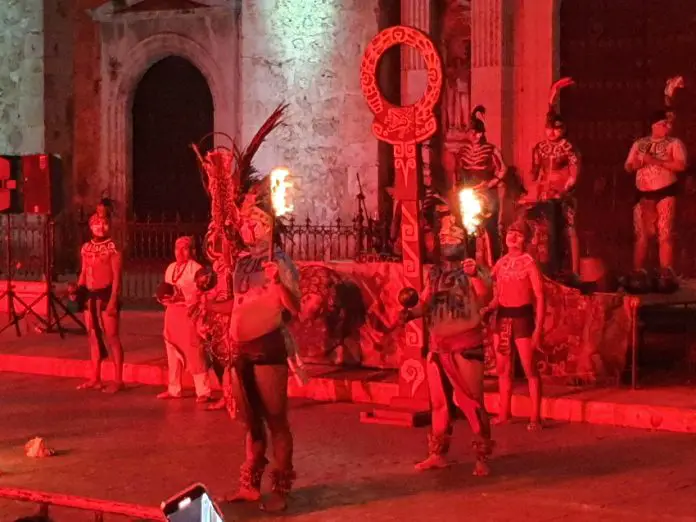The Mesoamerican ball game, which dates back over 3,500 years, was an important ritual among pre-Columbian civilizations, including the Maya. The ball courts they used for this sport exist to date in archaeological sites in Mexico and elsewhere. Despite the age of the game, some variations have survived over the millennia and are still played today – visitors to Mérida can watch the Maya ball game every Saturday evening in the city’s historic center.
The ball game played a vital role in ancient Maya society
The Maya called the ball game “Pok-Ta-Pok,” supposedly due to the sounds of the ball hitting the court’s walls. According to the National Institute of Anthropology and History (INAH), the ball court represented the universe, with the play areas’ borders reflecting the stars’ rising and setting. While the ball game is usually played with the hips, it was also played in other ways, such as using shoulders.
The pattern of play is believed to have resembled the movements of celestial bodies and the confrontation between opposing phenomena, such as cycles of day and night. As sun was thought to face off the opposing forces in the underworld (Xibalba) to rise every morning, so too did the players on the court. The ritual game was also linked to the seasonal rebirth of plants.
The ball is traditionally made of rubber and had weighed about three kilograms in ancient times. Players are said to have worn certain protective gear. The game in Mérida is played on the street in front of the famous Mérida cathedral, with the ball ring in the center of the play area and the two teams on each side. In pre-Columbian times, the rings were on the side walls of the ball court. INAH says up to seven players participated in each team, which supposedly had complicated scoring methods.
You can witness ceremonial activities before the ball game in Mérida begins, including a purification ritual by a Maya priest. The players wear colorful attire with headdresses and use their hips to strike the ball. This means they must sometimes get down to floor level to hit the ball. You might even see a goal or a few. We saw a few goals in a recent Mérida game, which was a wonderful experience amid the vibrant atmosphere. The players continue the game after a goal, unlike in ancient times when a goal was supposed to have meant immediate victory. There is an ongoing commentary about the ball game and related history throughout the performance, although this is in Spanish. In the final part of the Mérida ball game, the participants use a fireball and play it with their bare hands. The players showcase impressive skills in handling a ball in flames.

So, what would happen if you lost the Maya ball game in ancient times? According to some theories, the losers were sacrificed. However, it is unclear if human sacrifices were part of the ball game ritual, although they may have happened in certain instances, such as when war prisoners were involved.
Plan your visit to see the Maya ball game in Mérida
The ball game usually takes place on Saturdays at 8.00 pm in front of the Mérida cathedral. It is a free event. The seats fill up fast, so try to get there about an hour before if possible. You can also take pictures with the players after the game and get a cleansing ritual from a Maya priest.
Watching this depiction of the ancient ball game will give you a glimpse into the fascinating history and culture of the Maya and what this ritual must have been like in ancient times. To learn more about the Maya culture and history, visit a few of the many archaeological sites in Yucatán. You can see a magnificent ball court, considered ceremonial in purpose, at the famous Maya city of Chichén Itzá, about an hour and a half’s drive from Mérida. The site has 13 ball courts. Archaeologists also found a ball game scoreboard made of stone in Chichén Itzá. The Maya city of Uxmal and its ball court are also beautiful.
Thilini Wijesinhe, a financial professional turned writer and entrepreneur, moved to Mexico in 2019 from Australia. She writes from Mérida, Yucatán. Her website can be found at https://thilini.me/
